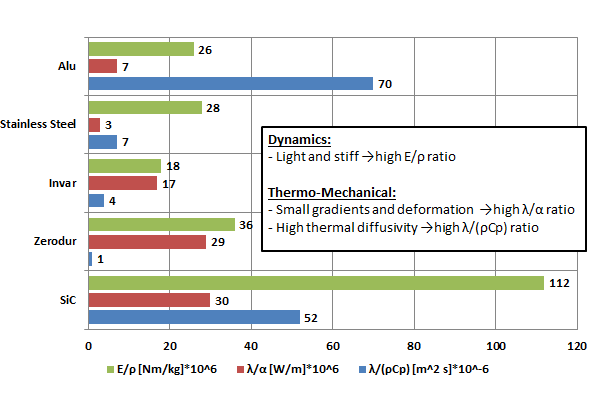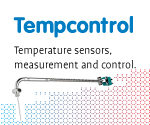The use of low CTE construction materials and design principles such as the gridiron pendulum are still common practice in precision engineering. Invar is still used as construction material in some of the most advanced machines. Modern construction materials are e.g. Zerodur (CTE ~ 0.02 [ppm/°C]) and Silicon Carbide (see Figure 1).

Figure 1: Material properties of typical construction materials
In general, thermal problems in precision engineering are related to the expansion and contraction of materials as a result of internal (actuators, electronics, cooling water, etc.) or external heat sources (environment, people, processes, etc.). To avoid these problems, it is best to locate the heat sources away from the critical components. In most cases, this is not possible, so one has to deal with the effects of these thermal disturbances.
When tackling these thermal effects, three main steps can be defined:
- Material selection, geometry and design principles;
- Thermal conditioning;
- (Software) compensation.
Besides the above mentioned aspects, also predictive modelling and thermal measurements are important topics to discuss. These topics are not covered in this section, but elsewhere on this website.
